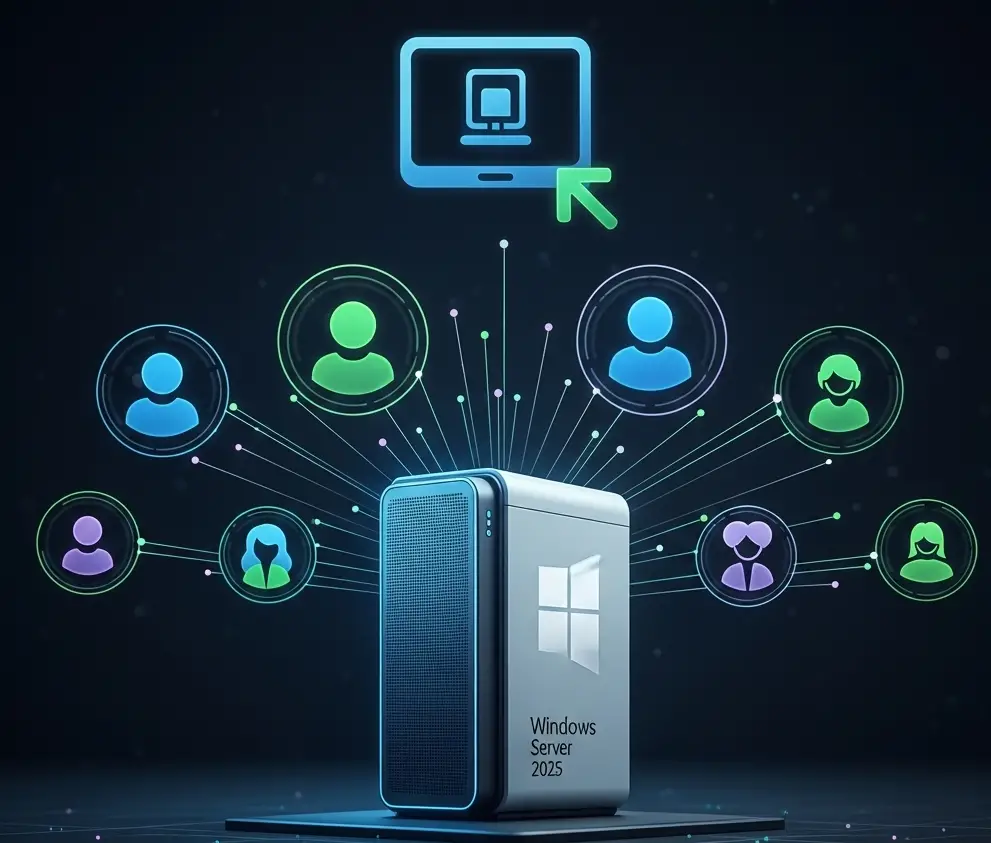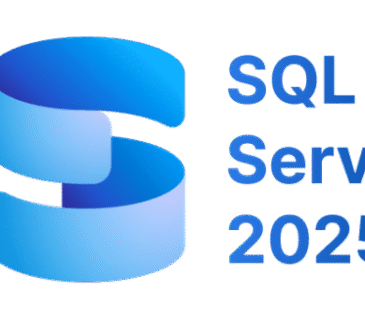Enable Multiple Domain Users Remote Desktop Sessions on Same Server in Windows Server 2025

Windows Server 2025 provides robust capabilities for enabling multiple domain users to access Remote Desktop sessions simultaneously. This comprehensive guide covers everything you need to know about configuring, licensing, and managing multi-user Remote Desktop Services (RDS) environments with domain integration.
Table of Contents
- Prerequisites and Requirements
- Understanding RDS Licensing
- Installing Remote Desktop Services
- Configuring Multiple User Sessions
- Domain Integration Setup
- Security Configuration
- Performance Optimization
- Troubleshooting Common Issues
- Best Practices
- Monitoring and Maintenance
Prerequisites and Requirements
Hardware Requirements
Before implementing multiple RDS sessions, ensure your Windows Server 2025 meets these minimum specifications:
- CPU: Multi-core processor (4+ cores recommended for 10+ concurrent sessions)
- RAM: 4GB minimum + 512MB per additional concurrent session
- Storage: 40GB free space minimum, SSD recommended for better performance
- Network: Gigabit Ethernet connection for optimal user experience
Software Requirements
- Windows Server 2025 Standard or Datacenter edition
- Active Directory Domain Services (if using domain authentication)
- Remote Desktop Services role installed
- Appropriate RDS Client Access Licenses (CALs)
Network Requirements
- Stable network connectivity between client devices and server
- Port 3389 (RDP) accessible through firewalls
- Adequate bandwidth (minimum 150 Kbps per session)
Understanding RDS Licensing
License Types
Windows Server 2025 includes two administrative RDS connections by default, but additional users require proper licensing:
RDS User CALs
- Best for: Organizations where users access RDS from multiple devices
- Requirement: One CAL per user, regardless of device count
- Domain dependency: Works with domain-joined servers
RDS Device CALs
- Best for: Shared workstations or kiosks
- Requirement: One CAL per device accessing RDS
- Flexibility: Works with both domain and non-domain environments
Licensing Server Setup
A Remote Desktop License Server must be configured to manage and distribute CALs across your environment. The license server can operate across different Active Directory domains or forests with proper trust relationships established.
Installing Remote Desktop Services
Step 1: Install RDS Role
- Open Server Manager
- Click Add roles and features
- Select Role-based or feature-based installation
- Choose your target server
- Select Remote Desktop Services from the server roles list
- Follow the installation wizard
Step 2: Configure RDS Deployment
After installing the basic role, configure a complete RDS deployment:
- In Server Manager, click Remote Desktop Services
- Select Quick Start for single-server deployment or Standard Deployment for multi-server scenarios
- Choose Session-based desktop deployment
- Select the target server and complete the wizard
Step 3: Install RD Licensing Role
- Return to Add roles and features
- Navigate to Remote Desktop Services
- Select Remote Desktop Licensing
- Complete the installation
Configuring Multiple User Sessions
Enable Multiple Sessions via Group Policy
- Open Group Policy Management Console (gpmc.msc)
- Navigate to the appropriate Organizational Unit containing your RDS servers
- Create or edit a Group Policy Object
- Browse to:
Computer Configuration > Policies > Administrative Templates > Windows Components > Remote Desktop Services > Remote Desktop Session Host > Connections
Key Policy Settings
Restrict Users to Single Session
- Policy: “Restrict Remote Desktop Services user to a single Remote Desktop Services session”
- Setting: Disabled
- Purpose: Allows users to have multiple concurrent sessions
Set Maximum Connections
- Policy: “Limit number of connections”
- Setting: Enabled
- Value: Set based on your server capacity and licensing (e.g., 50 connections)
Configure Session Limits
- Policy: “Set time limit for active Remote Desktop Services sessions”
- Setting: Configure based on organizational needs
- Recommendation: 8-12 hours for standard business use
Registry Method (Alternative)
For direct server configuration without Group Policy:
- Open Registry Editor (regedit.exe)
- Navigate to:
HKEY_LOCAL_MACHINE\SYSTEM\CurrentControlSet\Control\Terminal Server - Create or modify these DWORD values:
fSingleSessionPerUser: Set to 0 (allows multiple sessions per user)MaxInstanceCount: Set to desired maximum connections
Domain Integration Setup
Configure Cross-Domain RDS Access
Trust Relationships
For RDS servers to serve users from multiple domains:
- Establish two-way trust between domains
- Ensure RDS License Server is a member of Terminal Server License Servers group in target domains
License Server Domain Configuration
- Open Remote Desktop Licensing Manager
- Right-click the license server
- Select Properties
- Configure Discovery Scope to include additional domains
User Account Configuration
Domain User Permissions
Grant appropriate users Remote Desktop access:
- Open Local Group Policy Editor (gpedit.msc) on the RDS server
- Navigate to:
Computer Configuration > Windows Settings > Security Settings > Local Policies > User Rights Assignment - Modify Allow log on through Remote Desktop Services
- Add domain users or groups (e.g.,
DOMAIN\RDP-Users)
Group Membership Method
Create a dedicated Active Directory group for RDS users:
- Create security group:
RDS-Users - Add domain users to this group
- Grant the group Remote Desktop logon rights on the server
Security Configuration
Network Level Authentication
Enable Network Level Authentication for enhanced security:
- Open System Properties
- Navigate to Remote tab
- Check Enable Network Level Authentication
SSL Certificate Configuration
Implement SSL encryption for RDP connections:
- Open Remote Desktop Session Host Configuration
- Right-click Connections → RDP-Tcp
- Select Properties → General tab
- Configure Security layer: SSL (TLS 1.0)
- Select appropriate certificate
Firewall Configuration
Configure Windows Firewall for RDS:
- Enable Remote Desktop rule
- Consider restricting access to specific IP ranges
- Monitor connection attempts through Event Viewer
User Session Security
Implement session-level security measures:
- Configure automatic screen locks
- Set session timeout policies
- Enable session encryption
- Implement multi-factor authentication where possible
Performance Optimization
Server Performance Tuning
Memory Management
- Allocate sufficient RAM per concurrent session
- Monitor memory usage through Performance Monitor
- Consider implementing page file optimization
CPU Optimization
- Distribute RDS sessions across multiple cores
- Monitor CPU utilization during peak usage
- Consider processor affinity settings for critical applications
Storage Performance
- Use SSD storage for user profiles and applications
- Implement proper disk space monitoring
- Configure pagefile on separate physical disk
User Experience Optimization
RemoteFX Configuration
Enable RemoteFX for improved graphics performance:
- Install RemoteFX role service
- Configure RemoteFX policies in Group Policy
- Enable GPU acceleration where supported
Bandwidth Management
Implement bandwidth controls:
- Configure connection quality settings
- Limit bandwidth per session if necessary
- Prioritize critical applications
Troubleshooting Common Issues
Licensing Problems
“No license server available” Error
Solution:
- Verify RD Licensing service is running
- Check license server discovery configuration
- Ensure proper CAL installation and activation
CAL Allocation Issues
Solution:
- Review CAL usage in RD Licensing Manager
- Verify user/device CAL allocation
- Check for sufficient available licenses
Connection Issues
“Maximum connections exceeded”
Solution:
- Review current active sessions
- Disconnect idle sessions
- Increase connection limit if licensing permits
Authentication Failures
Solution:
- Verify domain trust relationships
- Check user account permissions
- Review RDS security group membership
Performance Issues
Slow Session Response
Solution:
- Monitor server resource utilization
- Optimize network bandwidth allocation
- Review application performance within sessions
Session Disconnections
Solution:
- Check network stability
- Review session timeout policies
- Examine Event Viewer for disconnect reasons
Best Practices
Capacity Planning
- Plan for 20% overhead beyond expected concurrent users
- Monitor usage patterns to optimize resource allocation
- Implement proper backup and disaster recovery procedures
License Management
- Regularly audit CAL usage and allocation
- Maintain accurate user/device inventories
- Plan for license renewal and compliance
Security Management
- Implement principle of least privilege
- Regular security updates and patches
- Monitor and audit RDS access logs
- Use VPN or DirectAccess for external connections
User Management
- Create standardized user profiles
- Implement roaming profiles for consistent experience
- Regular cleanup of inactive user sessions
- Provide user training on RDS best practices
Monitoring and Maintenance
Performance Monitoring
Implement comprehensive monitoring using:
- Performance Monitor: Track CPU, memory, and network utilization
- Event Viewer: Monitor RDS-related events and errors
- Resource Monitor: Real-time resource usage analysis
- Third-party tools: Consider SCOM or other enterprise monitoring solutions
Regular Maintenance Tasks
Daily Tasks
- Monitor active sessions and resource usage
- Review system event logs for errors
- Check license server availability
Weekly Tasks
- Analyze performance trends
- Review user access patterns
- Update security policies as needed
Monthly Tasks
- Comprehensive system performance review
- License usage analysis and planning
- Security audit and compliance check
- System backup verification
Health Monitoring Scripts
Create PowerShell scripts to automate monitoring:
# Example: Monitor RDS Session Count
Get-WmiObject -Class Win32_PerfRawData_LocalSessionManager_TerminalServices |
Select-Object -Property ActiveSessions, InactiveSessions
Conclusion
Successfully implementing multiple domain user Remote Desktop sessions on Windows Server 2025 requires careful planning, proper licensing, and ongoing management. By following this comprehensive guide, you can establish a robust, secure, and scalable RDS environment that meets your organization’s remote access needs.
Remember to regularly review your configuration, monitor performance metrics, and stay current with security updates to maintain an optimal RDS deployment. Proper implementation of these guidelines ensures reliable remote access for domain users while maintaining security and compliance requirements.
For organizations with complex requirements or large-scale deployments, consider engaging Microsoft-certified consultants to ensure optimal configuration and ongoing support.
- Design



![Windows Server 2025 LTSC [10.0.26100.7171] Version 24H2 4 Windows Server 2025 LTSC [10.0.26100.7171] Version 24H2](https://vmorecloud.com/wp-content/uploads/2025/12/Windows-Server-2025-365x330.jpg)

